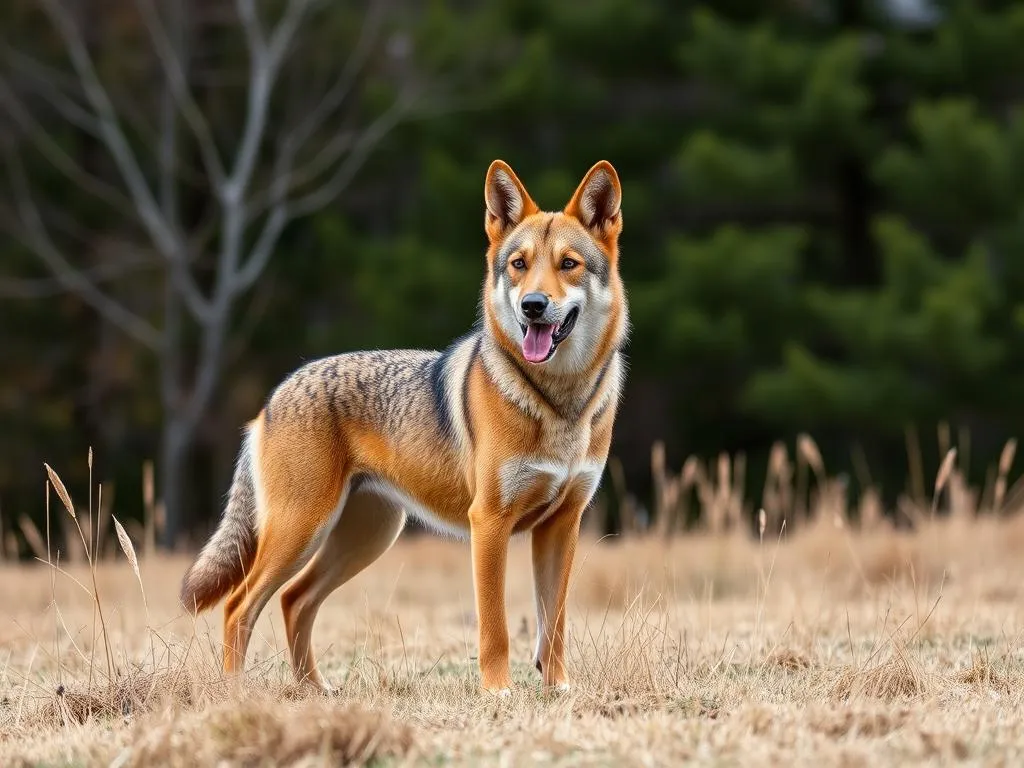
The increasing presence of coyotes in suburban areas has raised concerns for dog owners. These wild animals can pose a serious threat to domestic dogs, especially if they wander into coyote territory. As coyote populations expand and adapt to urban environments, understanding how to protect dogs from coyotes becomes essential for every pet owner.
Understanding Coyotes
Coyote Behavior and Habitat
Coyotes are highly adaptable creatures known for their intelligence and social structure, often living in packs. They are primarily nocturnal, which means they are most active during the night and at dawn or dusk. Coyotes typically inhabit a variety of environments, including forests, grasslands, and urban areas. Their ability to thrive in diverse landscapes allows them to live closer to human populations, increasing the likelihood of encounters with domestic pets.
Coyote Diet and Hunting Patterns
The diet of a coyote is diverse and may include small mammals like rabbits, rodents, and birds, alongside fruits and vegetables. However, coyotes will opportunistically hunt smaller animals, including domestic dogs, particularly those that are small or unsupervised. Understanding why coyotes might target dogs is crucial; often, they see them as potential prey or competition for food.
Signs of Coyote Presence
Recognizing signs of coyote activity in your area is vital for prevention. Look for physical indicators such as:
- Tracks: Coyote tracks are typically about 2-3 inches long and resemble a smaller dog’s tracks.
- Droppings: Their scat often contains fur, bones, and seeds, indicating their diet.
- Howling: Coyotes communicate through a series of howls, which can be heard at night.
If you notice these signs, it may be time to take extra precautions to protect dogs from coyotes.
Risk Assessment
Factors Influencing Coyote Encounters
Coyotes are generally more active during certain times, notably at night and in the early morning. Additionally, their behavior can change with the seasons; for instance, during breeding season, they may be more territorial and aggressive. Urban areas can also influence coyote behavior; as they adapt to human presence, they may become bolder, further increasing the risk for pets.
Breed-Specific Vulnerabilities
Some dog breeds are more vulnerable to coyote attacks than others. Smaller breeds, such as Chihuahuas or Toy Poodles, are at higher risk due to their size. Additionally, breeds with a strong prey drive or those that are overly curious may wander farther from their owners, increasing their exposure to coyotes. Understanding your dog’s temperament and breed-specific traits can help in assessing the risk.
Preventive Measures
Secure Your Property
One of the most effective ways to protect dogs from coyotes is to secure your property. Consider the following strategies:
- Fencing: Install a robust fence that is at least six feet high and extends underground to prevent coyotes from digging underneath.
- Gates and Doors: Ensure that gates are always closed and that doors are secure to prevent dogs from wandering out.
- Remove Attractants: Keep your yard clean by removing food sources such as pet food, fallen fruit, and garbage that might attract coyotes.
Safe Walking Practices
When walking dogs, safety is paramount. Here are some guidelines to ensure safe dog walking:
- Timing: Avoid walking during twilight or nighttime when coyotes are most active.
- Leashes and Harnesses: Always use a sturdy leash and harness to maintain control over your dog, preventing them from running off.
- Stay in Well-Lit Areas: Choose well-lit and populated areas for walks to deter coyotes from approaching.
Training and Behavioral Strategies
Training your dog can significantly reduce the chances of a negative encounter. Consider these training and behavioral strategies:
- Command Training: Teach basic commands such as “come,” “stay,” and “leave it.” This can help you control your dog in potentially risky situations.
- Socialization: Expose your dog to various environments and stimuli to reduce anxiety and improve their behavior around wildlife.
- Behavior Modification: Address any tendencies your dog may have towards chasing small animals, as this can lead them into dangerous situations.
Emergency Preparedness
What to Do in a Coyote Encounter
In case of a coyote encounter, staying calm is crucial. Follow these steps:
- Assess the Situation: Observe the coyote’s behavior. If it appears aggressive or is approaching, prepare to react.
- Make Noise: Shout, clap your hands, or use a whistle to scare the coyote away. Make your presence known.
- Back Away Slowly: Do not turn your back on the coyote. Slowly back away while keeping your dog close.
- Seek Safety: If the coyote continues to approach, find a secure area, such as a car or building.
First Aid for Dog Injuries
Should a coyote attack occur, it’s essential to know basic first aid for your dog:
- Assess the Injury: Check for bleeding, bites, or other injuries.
- Control Bleeding: Apply a clean cloth or gauze to any bleeding wounds and apply pressure.
- Keep Your Dog Calm: Try to keep your dog calm and still to avoid worsening injuries.
- Veterinary Care: Seek veterinary care immediately, as they will need a thorough examination and possible treatment for injuries or infections.
Health Care Considerations
Vaccinations and Preventive Care
Keeping your dog’s vaccinations up to date is critical, particularly for diseases like rabies, which can be transmitted by wildlife, including coyotes. Additionally, parasite prevention is important, as coyotes can carry fleas, ticks, and other parasites that may affect your dog. Discuss with your veterinarian about appropriate preventive care measures to safeguard your dog’s health.
Regular Vet Check-ups
Routine veterinary visits are essential for monitoring your dog’s health and well-being. During these visits, discuss any concerns related to wildlife exposure and ensure your dog is up to date on vaccinations and preventive treatments. Regular health checks can help detect potential issues early, ensuring your dog remains healthy and safe.
Community Awareness and Action
Reporting Coyote Sightings
Being proactive in your community can help manage coyote populations. If you spot a coyote, report it to local wildlife authorities. They can monitor coyote activity and provide guidance on safety measures. Community awareness can lead to collective action, helping to protect both pets and residents.
Educating Other Dog Owners
Engaging with fellow dog owners in your community about coyote safety can foster a supportive network. Share strategies, resources, and experiences to raise awareness about the importance of protecting dogs from coyotes. Organizing community discussions or workshops can be an excellent way to educate others on this critical issue.
Conclusion
Protecting your dog from coyotes requires awareness, preparation, and proactive measures. By understanding coyote behavior and implementing safety strategies, you can significantly reduce the risk of encounters. Remember to secure your property, practice safe walking habits, and train your dog effectively. Stay vigilant and informed, and encourage others in your community to do the same for the safety of our beloved pets.









